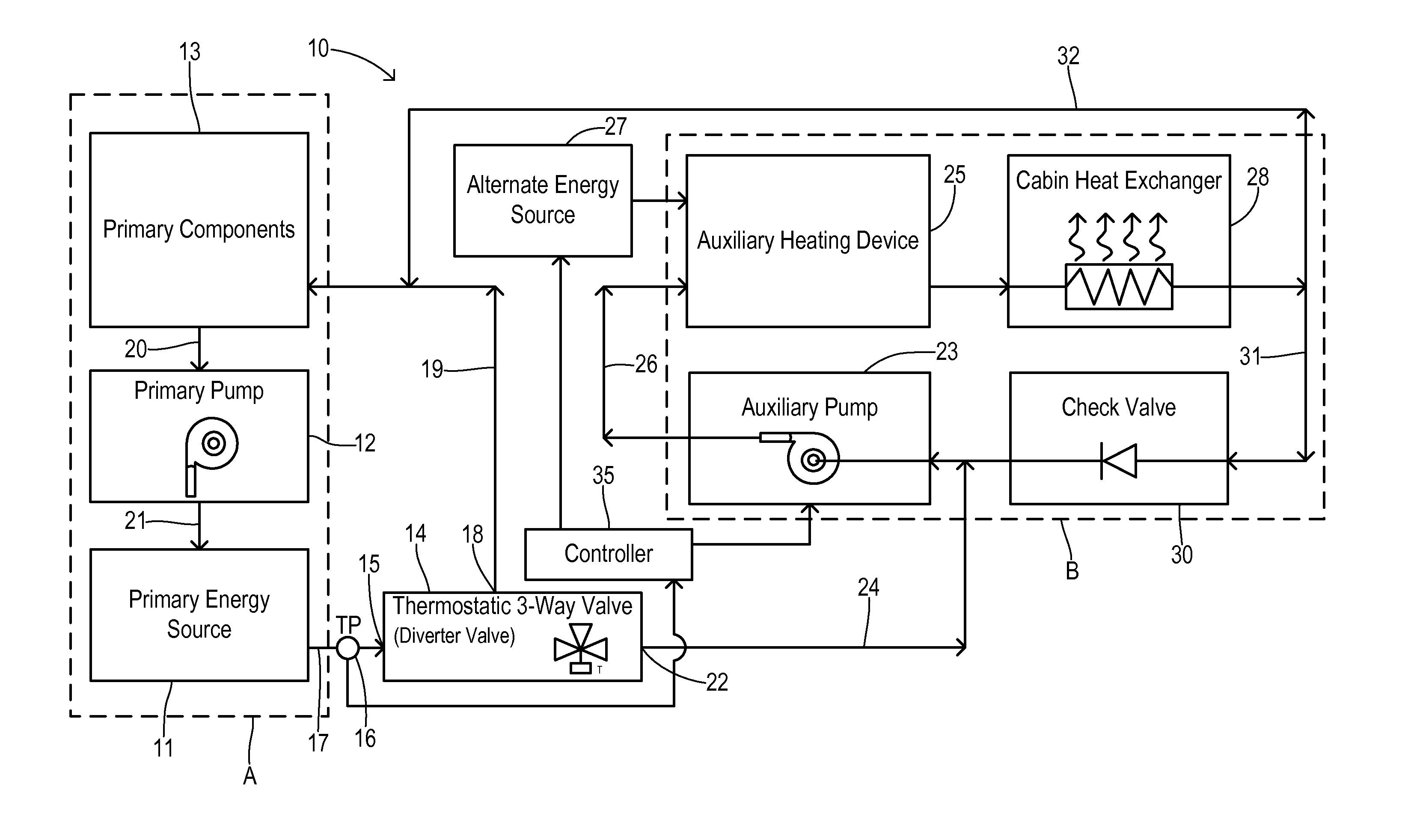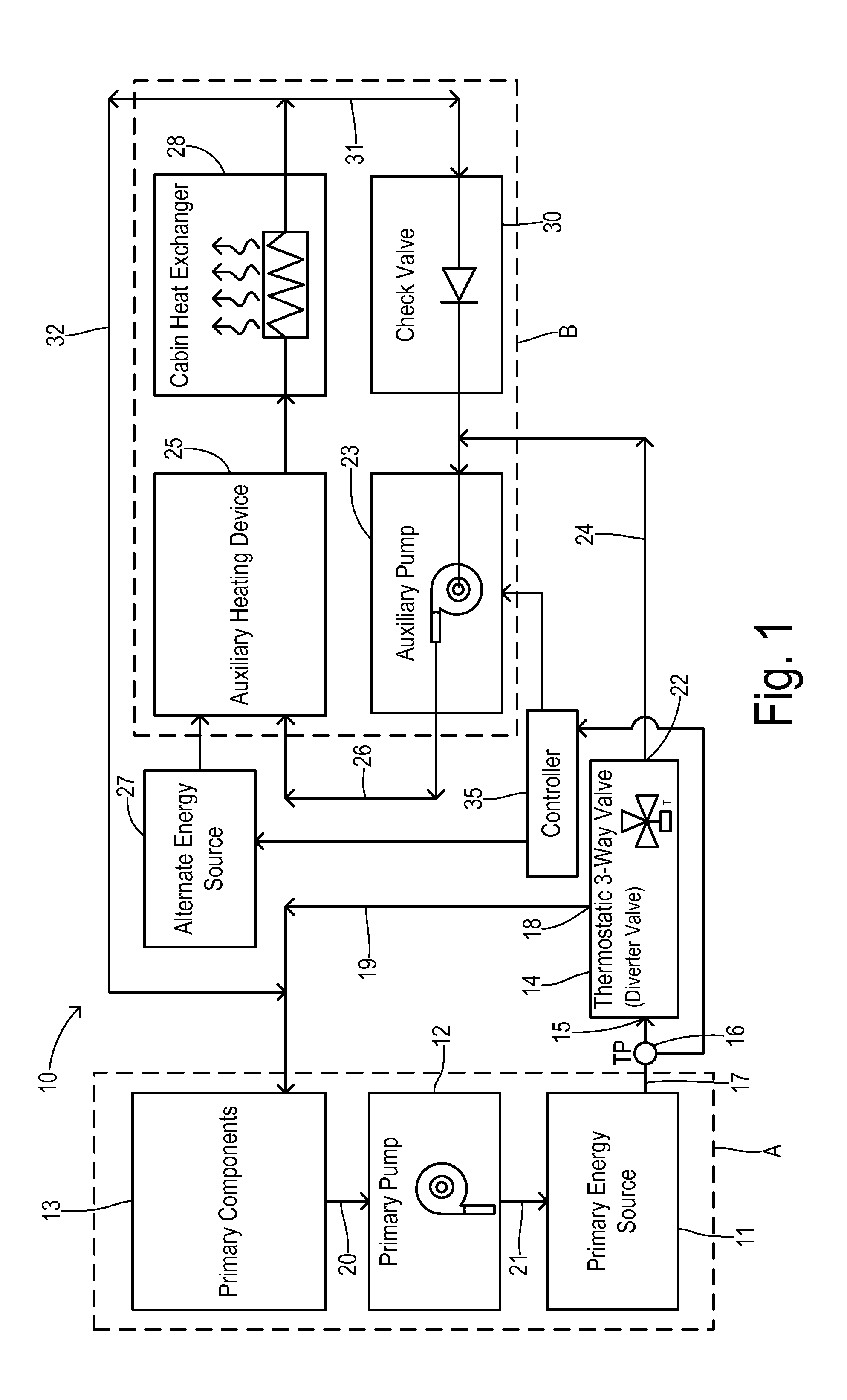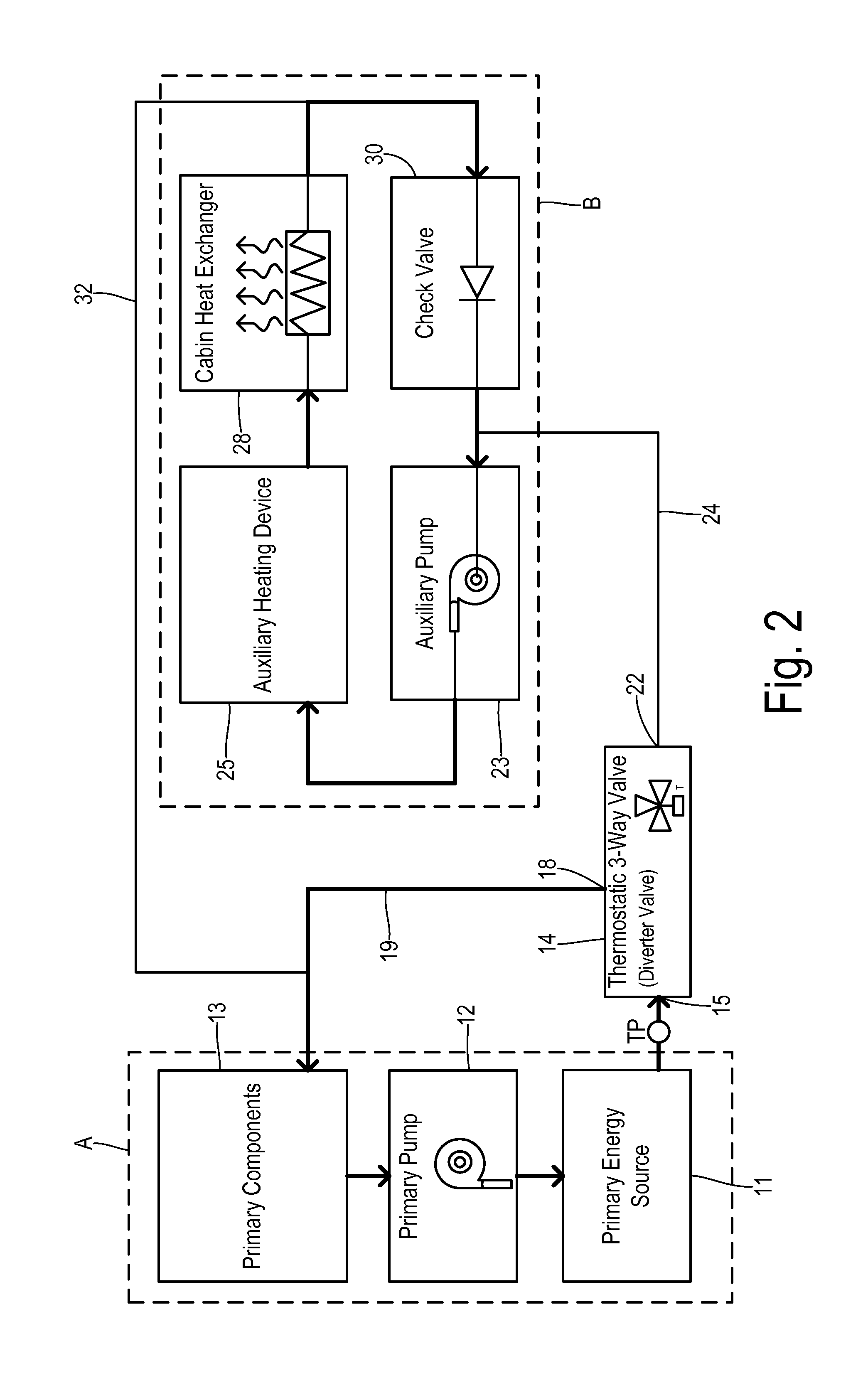Thermostatically-Controlled Multi-Mode Coolant Loops
- Summary
- Abstract
- Description
- Claims
- Application Information
AI Technical Summary
Benefits of technology
Problems solved by technology
Method used
Image
Examples
first embodiment
[0025]FIG. 2 shows operation of this first embodiment in an isolated loops mode that occurs when primary energy source 11 insufficiently heats the coolant. Thermostatic valve 14 is configured to direct coolant from inlet 15 to substantially only first outlet 18 when the coolant received at inlet 15 is below a first setpoint temperature. On the other hand, valve 14 directs coolant from inlet 15 to substantially only second valve outlet 22 when receiving coolant at inlet 15 having a temperature TP that is at or above a second setpoint temperature which is higher than the first setpoint temperature. The first and second setpoint temperatures are determined according to the mechanical properties of valve 14 which may be of conventional construction (e.g., based on wax or another phase-change material). A heavier line weight for the coolant conduits in FIG. 2 identifies portions of the coolant circuit where coolant flows during the isolated loop mode. Thus, thermostatic valve 14 is set t...
second embodiment
[0030]Operation of the second embodiment shown in FIGS. 4-6 is as follows. Starting with cold coolant, valve 14 is positioned to result in the isolated (dual) loops mode (FIG. 5) to provide rapid warming of the passenger cabin via auxiliary heating device 25. No flow occurs between branches A and B via conduit 44 because of the conservation of mass and because conduit 45 is blocked at second outlet 22 of valve 14. When coolant temperature TA of the auxiliary branch B entering valve 14 increases above the first setpoint temperature, valve 14 gradually changes position until the second setpoint temperature is reached. At that point, valve 14 is in a position to divert substantially all of the coolant flow into the mixed loop (single loop) mode which shares coolant heated by primary energy source 11 to both branches A and B. Advantages of the embodiment shown in FIGS. 4-6 include achieving a faster peak efficiency of primary energy source 11 as well as the other components in primary b...
PUM
 Login to View More
Login to View More Abstract
Description
Claims
Application Information
 Login to View More
Login to View More - R&D
- Intellectual Property
- Life Sciences
- Materials
- Tech Scout
- Unparalleled Data Quality
- Higher Quality Content
- 60% Fewer Hallucinations
Browse by: Latest US Patents, China's latest patents, Technical Efficacy Thesaurus, Application Domain, Technology Topic, Popular Technical Reports.
© 2025 PatSnap. All rights reserved.Legal|Privacy policy|Modern Slavery Act Transparency Statement|Sitemap|About US| Contact US: help@patsnap.com



